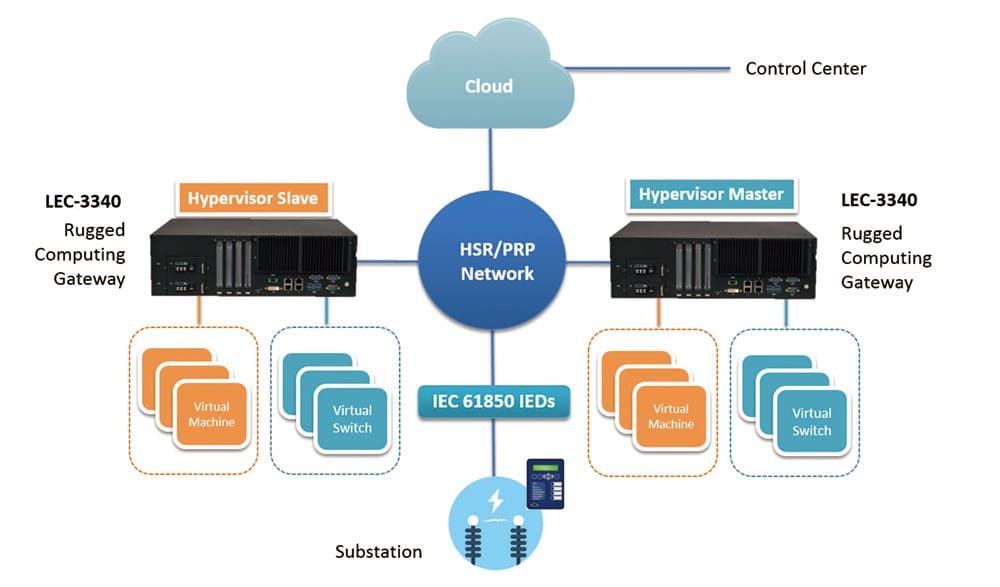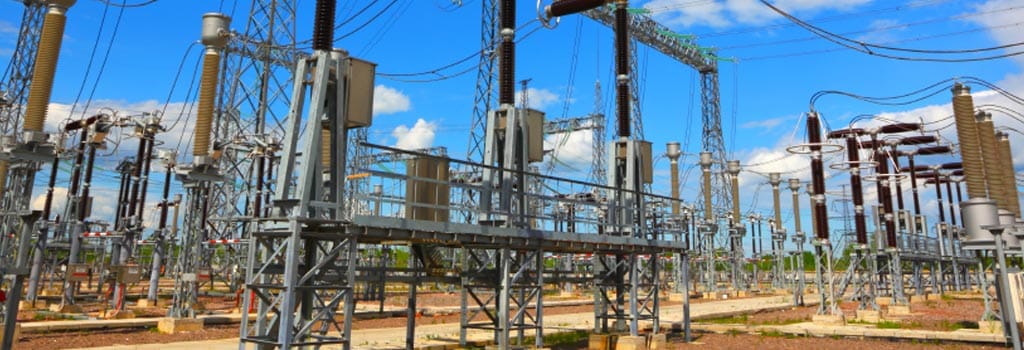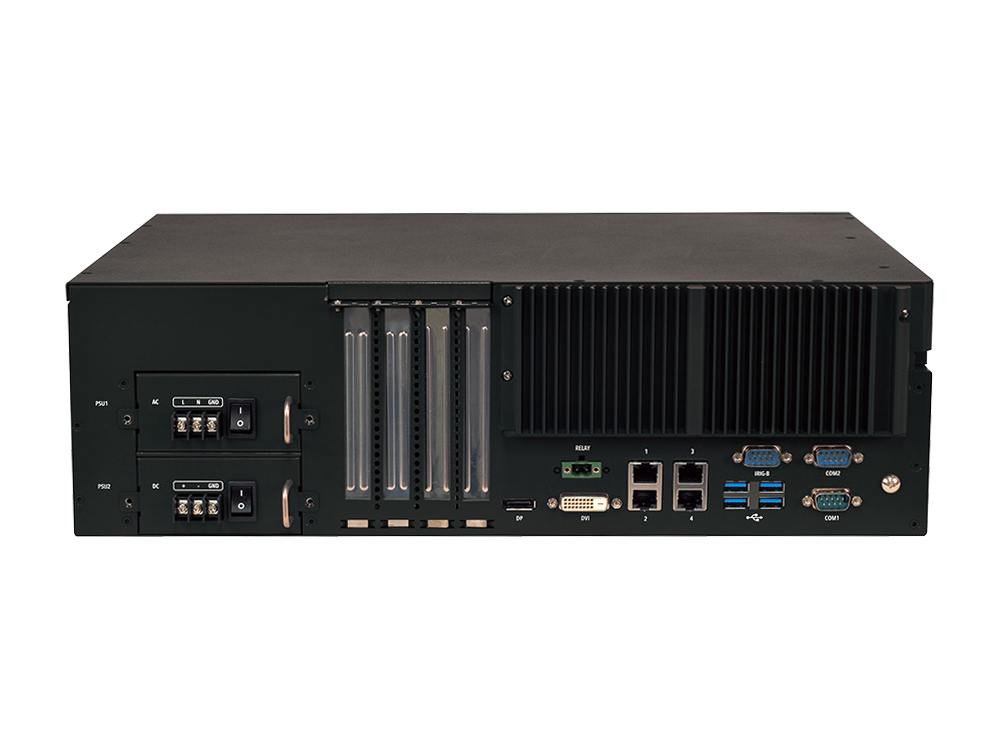Background
In recent years, utility plant owners have been investigating opportunities and strategies to bring intelligence into substations to enable smart grid paradigm. In a typical digitalized substation, it is obvious to see robust embedded computing gateways with high-performance compute, networking and storage have been integrated to enable control and monitoring of substations. Intelligent HMIs (human-machine interfaces) terminals and protocol-authenticating servers are used to enable communications. All these have contributed to the increasing complexity and footprint of SCADA management in substations.
Therefore, virtualization seems to be the economical and technologically feasible solution to consolidate all the hardware onto a virtualized platform. Through virtualization, utility infrastructure owners can adopt white-box gateway and servers and implement them in a redundant system for high-availability purpose. This virtualization practice has been adopted in the IT domain for a while, and now it has extended into the OT (operational technology) world.
Requirements
The selected hardware must be able to accommodate the necessary memory and computing resources, as well as native support of hypervisor and related drivers to run substation virtualization. Networking functions, such as VLAN, virtual switches and redundancy mechanisms (HSR/PRP) shall be included by default. Since the selected hardware is deployed in utility plant, it must meet IEC 61850-3 standards.
The list below summarizes essential requirements of the selected hardware platform:
- High-Performance Hardware Platform:
A high-performance platform that is designed with sufficient computing capacity, multiple processor cores and suitable memory equipment can optimize the serviceability and quality of virtualization of substations.
- ECC-enabled Memory:
To run virtualization in substations, ECC (error-correcting code) is a necessary mechanism since data corruption in memory may occur in substation environments, where numerous connected devices generate high-volume of data simultaneously. Also, it requires a minimum of 32 or 64GB of memory to run virtualization in substations.
- Virtualization Components
The selected hardware must be designed with virtualization components, in which the CPU, graphics unit, and I/O layer should natively support virtualization, so that multiple operating systems can access the virtualized platform. One typical example is Intel VT-x, which is optimal for substation devices, as it can enable client systems to provide dedicated access to hardware components, particularly LAN interface.
- Compliance with Substation Standards
To ensure the hardware appliance can operate reliably in substation environment, compliance with IEEE 1613 and IEC 61850-3 standards is mandatory as the standards specify the endurance level against extreme temperature, shock and vibration and electromagnetic.
- HSR & PRP Redundant Network Protocols
HSR and PRP compliance is required to meet the required redundancy in substation communication protocols. In other words, the selected hardware should be able to support these protocols either through built-in mechanism or external expansion.

Solutions
In this virtualization case, Lanner introduced LEC-3340, an IEC 61850-3 compliant 3U rackmount system powered by Intel® Xeon® E3-1505L V6, Core i3-7100E or i5-7442EQ processor to deliver high-performance computing and accelerate virtualization applications with built-in engines Intel VT-x. To ensure data integrity in memory, LEC-3340 supports ECC RAM. The high-availability system comes with optional redundant power supplies. To accelerate graphical process, LEC-3340 comes with four PCI Express slots for installation of external graphic card or HSR/PRP enabled modules. Regarding connections with industrial instruments, LEC-3340 is designed with isolation-protected Serial ports (COM).
Considering the ambient temperature in mission-critical infrastructures, LEC-3340 can operate under wide temperature range (-40~70°C). For deployment recommendation, LEC-3340 is compliant with IEC 61850-3 and IEEE 1613 for substation environment.
Related Articles
- IEC 61850-3 Certified Rugged Substation Platforms Enable Virtualized Digital Substations
- IEC-61850 as Standardized Network Architecture for Digitalized Substations







